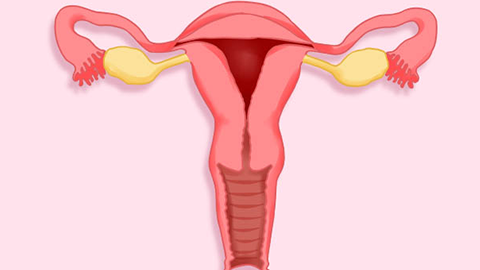Why Does the Uterus Prolapse?
Generally, uterine prolapse may be caused by factors such as aging, childbirth injuries, pelvic floor muscle relaxation, prolonged increased abdominal pressure, and pelvic inflammatory disease. It is recommended to seek timely medical attention, identify the underlying cause, and undergo symptomatic treatment under a physician's guidance. A detailed explanation is as follows:

1. Aging: With increasing age, female ovarian function declines, and estrogen levels decrease. Pelvic floor muscles and ligaments gradually relax, weakening the support for the uterus and making uterine prolapse more likely. Appropriate pelvic floor muscle training, such as Kegel exercises, can strengthen the supporting force of pelvic floor tissues. Estrogen supplementation under medical supervision may also help improve pelvic floor tissue condition.
2. Childbirth Injury: During delivery, excessive stretching or tearing of the pelvic floor muscles and ligaments without timely repair can weaken support for the uterus and lead to uterine prolapse. Postpartum pelvic floor rehabilitation training, such as electrical stimulation therapy and biofeedback therapy, should be initiated early to promote recovery of pelvic floor tissues. In some cases, wearing a pessary may provide additional support.
3. Pelvic Floor Muscle Relaxation: Long-term lack of exercise or congenital underdevelopment of the pelvic floor muscles can reduce their supporting capacity, making it difficult to maintain the normal position of the uterus. Consistent pelvic floor muscle contraction exercises combined with professional pelvic floor rehabilitation therapy can strengthen muscle strength. In severe cases, pelvic floor muscle repair surgery may be considered to reinforce the pelvic floor tissues and improve support through suturing and reinforcement.
4. Prolonged Increased Abdominal Pressure: Chronic coughing, constipation, obesity, and other factors can cause sustained elevation of abdominal pressure, continuously compressing the pelvic floor tissues and causing the uterus to gradually descend. Active treatment of the underlying conditions is necessary—for example, chronic cough patients can take medications such as dextromethorphan hydrobromide tablets, pentoxifylline tablets, or ambroxol hydrochloride oral solution as directed by a physician to relieve symptoms. Obese individuals should aim for reasonable weight loss to reduce abdominal pressure.
5. Pelvic Inflammatory Disease: Inflammation in the pelvic region can cause adhesions and reduced elasticity of pelvic floor tissues, compromising uterine support and leading to prolapse, which may be accompanied by symptoms such as lower abdominal pain and lumbosacral soreness. Patients may follow medical advice to use medications such as cefixime dispersible tablets, metronidazole tablets, and Baise Snake Capsules to control the inflammation.
In daily life, prolonged standing or sitting should be avoided, along with heavy physical labor, to prevent sudden increases in abdominal pressure. Maintaining a regular sleep schedule, eating a balanced diet, and maintaining a healthy weight are beneficial for preserving pelvic floor tissue function and preventing the worsening of uterine prolapse.




